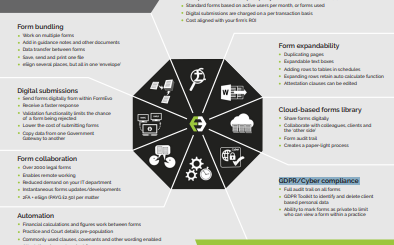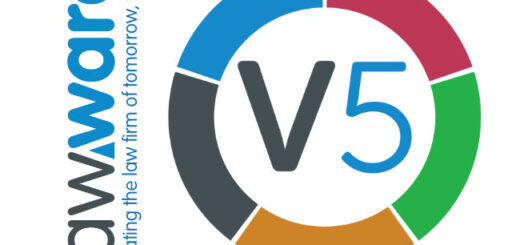Business Development for Lawyers: Back to Basics

Welcome to the latest edition of Back to Basics — a Business Briefing for Lawyers. This month the focus is on Business Development.
To help you with your business development, we take some time to work with a recognised business modelling tool—the Boston Matrix. This is a tool that helps you assess the strength of your services in terms of market share and market growth. Used properly, it will help you work out which services to build and grow, which services that you might consider ceasing to provide and which services that are currently marginal and could go either way.
If you need any help to review your business development, please get in touch with me—I’d be delighted to help.
Brian O’Neill LL.B MBA
Business Consultant
40c Drakemyre
Dalry
North Ayrshire
KA24 5JE
t. 07855 838395
Is this the “new reality”?
It is a real benefit being able to talk to someone like Simon Greig of LawWare, who, whilst working within the legal profession as I do, is not and has never been a lawyer. I met Simon the other day when he was in Ayr and we had a chat about how things were and what we were each busy doing. Simon repeated something to me that he had first said a few months ago when we had last met and it was this: “You know, it’s about time everyone stopped talking about coming out of the recession or whether we’re going to go into a double dip and started to accept that what we now have is a new reality. We are where we are and businesses need to look at what they’re doing right now and whether that behaviour is going to help or hinder their future growth” Wise words, indeed.
In recent editions of Back to Basics, we’ve looked at Forward Planning and Taking Action but it seems that many legal firms are still waiting in the forlorn hope that some volume will return to the residential conveyancing and estate agency market. Alas, that doesn’t look like happening any time soon. Banks are still facing liquidity problems and, until they resolve these, mortgages (particularly the higher loan-to-value mortgages) will remain difficult to come by and mostly out of reach of first time buyers.
By now, you’re probably running a pretty lean ship, having stripped out costs as the recession bit—but by now also, there’s probably very little else that you can strip out without damaging the fundamental capabilities of the business beyond repair!
So, if this is the new reality, what are you going to do about developing your business? Do you know where to start? Have you started already? What are the things you need to do first?
These are all sensible questions (and questions that you should continuously ask as you develop your business) and the answers are reasonably simple.
Do a quick SWOT analysis. Look at the Strengths you have in your business (but also be aware of the Weaknesses). Look at the Opportunities that are available to you (but also be conscious of the Threats). Look at the services you provide—which ones have capacity for growth? Which ones generate decent profits? Which ones are you not entirely certain about?
Again, these are all fundamental questions that you need to ask yourself—and once you have the answers, why not do a bit of forward planning to put them into context and then take action and implement those plans?
You won’t be able to change your current direction without getting into motion—so make the decisions you need to make and off you go!
Simon says…..
Developing your Business for professionals
When Brian posed the subject for this month and mentioned the Boston Matrix, I thought ‘what the heck is that? However 15 minutes on the internet and I have now learned about Dogs, Cash Cows, Problem Children and Stars in completely new contexts! I don’t know everything and I’m happy to learn about new ideas and develop new skills; mostly because I spark off them and they tend to lead somewhere – a change in perception, understanding or attitude. Whenever I type the word ‘change’ I’m reminded of the lawyer I know that said to me a year or so ago “you know Simon, the only constant nowadays is Change”.
If you want things to change, then you have to make it happen, which means changing something you do. I would suggest if you want significant change – then significantly change something you do. This business development malarkey doesn’t happen by wishing or just thinking or even just planning – it needs action. This publication is aimed at educating, informing and encouraging. I know how much effort Brian puts into it and, as we all know, he then gives it away! Why is that? Well it’s a business development technique called Give to Get.
The Give to Get idea is simple enough – give something to a potential client and they will remember it and give you some business in return. In the context of legal services it is a bit more sophisticated than that – give something of value to a potential client that will impress them enough to engage you as their representative. The value aspect here is measured in terms of the potential client and not the lawyer, it is easy for a lawyer to give away their time (which is in many ways the lawyer’s most valuable resource) but that on its own is only of value to the lawyer – the trick here is to think in terms of the potential client and what is of value to them. It might be time—but it’s more likely to be an outline of the approach you would take toward dealing with their issue, identifying the risks involved and how you would mitigate these, whilst demonstrating a clear understanding of the aims and benefits that your client would derive from instructing you. Anything written/emailed must be in terms that the client can understand (which might be different client to client). Use your imagination to put yourself in your client’s shoes. Remember, if you say the same thing as everyone else then you are inviting a price comparison scenario. Even if it is a standard procedure there are always nuances that the client brings; you need to find them and bring them to the fore in order to distinguish yourself from the rest. I would call this being Professional. Of course, you don’t have to Give to Get to operate in this Professional manner as it is a good technique in itself—the more techniques you employ the better you enhance your business proposition and the more clients that you will win.
There will always be clients that buy on price and there may be times when your cash flow position necessitates a quick win – but only where it’s a quick delivery too (otherwise it’s a false economy). But if you build yourself a professional reputation, then people will hear about it and they will gravitate toward you.
Simon Greig is Sales Manager of LawWare Limited, Edinburgh. Contact Simon at simon@lawware.co.uk
Look to develop your services
There is no point providing services that nobody wants and that don’t make any profit for your business. One of the ways of working out which services you need to stick with, which ones you need to develop and which ones you need to ditch is by using a tool called the Boston Matrix.
This is a tool developed a number of years ago by the Boston Consulting Group and it’s designed to consider the produces and services that a business provides in terms of Market Share and Market Growth. The graphic opposite shows you the type of chart you will need to lay out your services in the different categories to aid you in your decision-making efforts. The Boston Consulting Group divided services into 4 categories: Cash Cows, Rising Stars, Question Marks (called Problem Children in some versions) and Dogs. These groupings can be explained as follows:
Dogs: Low Market Share / Low Market Growth—In these areas, your market presence is weak, so it’s going to take a lot of hard work to get noticed. Also, you won’t enjoy the scale economies of the larger players, so it’s going to be difficult to make a profit.
Cash Cows: High Market Share / Low Market Growth—Here, you’re well-established, so it’s easy to get attention and exploit new opportunities. However it’s only worth expending a certain amount of effort, because the market isn’t growing and your opportunities are limited.
Stars: High Market Share / High Market Growth—Here you’re well-established, and growth is exciting! These are fantastic opportunities for the services that fall into this sector and you should work hard to realise them.
Question Marks (Problem Children): Low Market Share / High Market Growth—These are the opportunities no one knows what to do with. They aren’t generating much revenue right now because you don’t have a large market share. But, they are in high growth markets so the potential to make money is there. Question Marks might become Stars and eventual Cash Cows, but they could just as easily absorb effort with little return. These services need serious thought as to whether increased investment in them is warranted.
Now that we know what the categories mean, on the following page, we’ll look at how we can use this tool.
So, how do you use the Boston Matrix?
Step One: Plot your services in terms of their relative market presence, and market growth on a blank matrix.
Step Two: Classify them into one of the four categories. If a service seems to fall right on an intersection between two categories, take a real hard look at the situation and rely on past performance to help you decide into which category you will place it.
Note: Be careful about these categories – there’s nothing magical about them or their position. There may be very little real difference between a Question Mark with a market share of 49%, and a Star with a market share of 51%. It’s also not necessarily true that there is a line that should run through the 50% position. As ever, use your common sense.
Step Three: Determine what you will do with each service. There are typically four different strategies to apply:
Build Market Share: Make further investments (for example, to maintain Star status, or turn a Question Mark into a Star)
Hold: Maintain the status quo (do nothing)
Harvest: Reduce the investment (enjoy positive cash flow and maximise profits from a Star or Cash Cow)
Divest: For example, get rid of the Dogs, and use the capital to invest in Stars and some Question Marks.
Key Points
The Boston Matrix is an effective tool for quickly assessing the options open to you, both on a corporate and personal basis.
With its easily understood classification of Dogs, Cash Cows, Question Marks and Stars, it helps you quickly and simply screen the opportunities open to you, and helps you think about how you can make the most of them.
Play to your Strengths
I briefly (and perhaps a little bit glibly) mentioned on the previous pace that you might want to carry out a quick SWOT Analysis. I don’t intend to cover this item in any detail in the short amount of space I have here, but simply want to clear up some confusion I frequently hear when people are talking about carrying out a SWOT analysis.
You need to be aware that Strengths and Weaknesses are things that are internal to your firm or business whilst Opportunities and Threats are in the external environment. Armed with that information, why don’t you spend half an hour with a piece of paper and a pencil and do your own quick SWOT analysis—and then see how you can build on your Strengths to take advantage of the Opportunities out there as well as to counter the Threats.
Contact us
Brian O’Neill LL.B MBA, Business Consultant, t. 01294 833220, m. 07855 838395, e. brian@drakemyre.co.uk
Simon Greig is Sales Manager of LawWare Limited, Edinburgh. Contact Simon on simon@lawware.co.uk
LawCloud: Legal Case, Matter and Practice Management for Law Firms UK








Recent Comments